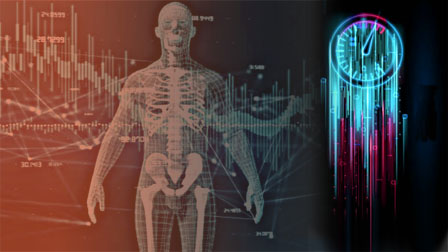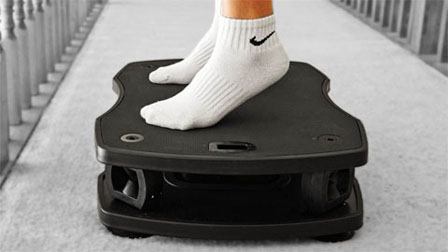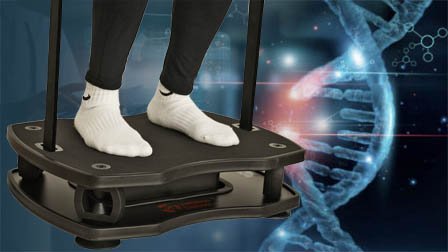Risks & Hazards of Vibration Plates
The risks associated with using vibration plates have not been thoroughly studied or well-documented. Clinical trial based scientific studies support that proper use of vibration plate does not pose a health hazard. However, we would recommend a cautious and risk-averse approach.
Content Index
- Who Should Not Use a Vibration Plate?
- Negative Experiences
- Wrong Equipment & Improper Use
- Hazardous Aspects
- No Specific Standard
- EMF Exposure
- Noise Level
Who May Not Be Suitable for Using a Vibration Plate
Vibration intervenes our body systems physically and physiologically in a way that we don't usually experience. The associated risks have not been properly evaluated for various health conditons. As a general precaution advice, vibration plate may not be suitable for individuals with certain medical conditions, including but not limited to.
- Pregnancy
- Recent surgery
- Knee replacement
- Hip replacement
- Pacemaker
- Heart disease
- Epilepsy
- Seizures
- Migraines
- Kidney stones
- bladder stone
- Motion sickness
- Acute arthritis
- Orthopedic injuries
- Retinal detachment
The risks also depend on the type of vibration plate, its movement pattern and parameters, as well as the exercise poses performed.
Consulting a medical professional is advisable for any concerns.
Negative Experiences
Nausea and Dizziness
Nausea and dizziness are the most commonly reported negative effects associated with using a vibration plate, particularly linear vibration plates, which can transmit vibrations to the upper body and head.
Nausea often occurs when vibrations disturb the stomach, and dizziness results from a natural reflex triggered by disruptions to sensory input, such as abnormal vibrations affecting hearing and vision.
Bending the knees and performing calf raises can help prevent vibrations from transmitting to the upper body, and avoid nausea and dizziness. Starting with low intensity and short exercise time allows most individuals to gradually build up their tolerance to vibration.
Vision Blur
Some users reports experiencing vision blur while using a vibration plate, but the blurriness usually resolves as soon as the vibration is stopped.
Knee Pain
Using a wrong types of vibration or incorrect exercise poses can negatively affect your joints and place excessive strain on your tendons and ligaments, potentially leading to injuries.
On the other hand, using a properly designed vibration plate with correct exercises can help alleviate knee pain, improve knee functionality, and strengthen the surrounding muscles.
Wrong Equipment or Improper Use
Choosing wrong equipment or improper use of vibration plates can pose risks.
Be cautious, as some vibration plate models are poorly designed and may harm users rather than promote health improvement. We strongly discourage using 3D or 4D vibration plates.
3D/4D vibration plates were so created that manufacturers could make up a marketing hype around their complex movements. However, there is no scientific support or logic to suggest that these complex movements are more beneficial for health than simple vertical movements..
On the contrary, the lateral movements featured in 3D/4D vibration plates can place improper stress on the knee joints, potentially leading to knee injuries.
Click the link below for the details
Hazardous Aspects
No Specific Standard
Covering ISO Standards
- [ISO 2631-1:1997] Evaluating human exposure to whole-body vibration, and the methods for measuring and assessing vibration to prevent health risks.
- [ISO 2631-5:2018] Evaluating vibration containing multiple shocks and its potential impact on human health. Offering methods to assess the effects of repeated shocks on the human body.
These standards offer some references for assessing the risks associated with using vibration plates, but they not specifically tailored to vibration plates and their applications.
As attested by millions of users over the years, using a whole-body vibration plate for 20 minutes a day is considered safe.
Clinical trial based scientific studies support that proper use of vibration plate does not pose a health hazard.
Just like it can positively influence your body, vibration intervention can also have adverse impact if used improperly or under inappropriate conditions.
EMF Exposure
Like all other household electric appliances, vibration plate generates electromagnetic fields (EMF).
The type of EMF generated by a vibration plate is called extremely low frequency EMF, in comparison with radio frequency EMF generated by microwave oven or cell phone.
Noise Level
Vibration plates generally produce minimal noise when operating below 20Hz. Pivotal oscillation plates are particularly quiet, as they typically vibrate at frequencies under 15Hz.
Linear vibration plates, however, tend to generate more noise compared to pivotal vibration plates, especially when operating above 30Hz.
Excessive mechanical noise often indicates a low-quality vibration machine, while harsh noise may suggest a malfunction.
In terms of loudness and annoyance, the human ear perceives the same dBA level differently depending on the sound frequency. For instance, 50 dBA at 30Hz sounds significantly louder than 50 dBA at 20Hz.
The VT007 stands out as an exceptionally quiet linear vibration plate, even at high frequencies. It not only achieves lower dBA levels but also effectively eliminates irritating high-frequency mechanical noise.



